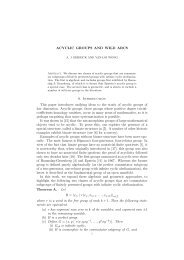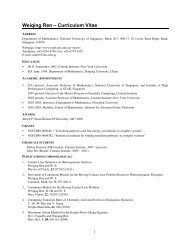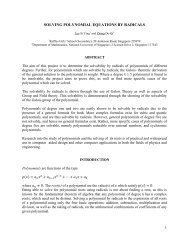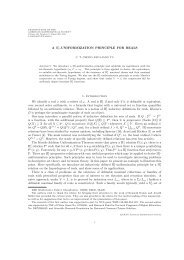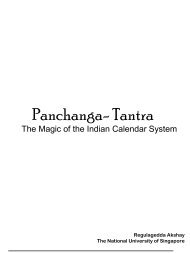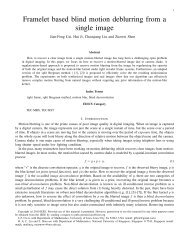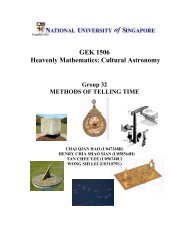When is Chinese New Year? - Department of Mathematics
When is Chinese New Year? - Department of Mathematics
When is Chinese New Year? - Department of Mathematics
Create successful ePaper yourself
Turn your PDF publications into a flip-book with our unique Google optimized e-Paper software.
Astronomical <strong>Chinese</strong> Western Celtic<br />
lì chūn Groundhog Day, Candlemas Imbolg<br />
March equinox chūn fēn Lady Day, Annunciation Day<br />
lì xià May Day, Walpurg<strong>is</strong>nacht Beltane<br />
June solstice xià zhì Midsummer Day<br />
lì qiū Lammas Lughnasa<br />
September equinox qiū fēn Michaelmas<br />
lì dōng Halloween, All Saints’, Guy<br />
Fawkes, Martinmas<br />
Samhain<br />
December solstice dōng zhì Chr<strong>is</strong>tmas Day<br />
Table 2: Holidays related to seasonal markers<br />
Th<strong>is</strong> <strong>is</strong> similar to the ecclesiastical calendar, where Chr<strong>is</strong>tmas Day and Annunciation<br />
Day on March 25 are solar holidays, while all the other holidays are tied to<br />
Easter and are therefore lunar.<br />
4 The Rules <strong>of</strong> the <strong>Chinese</strong> Calendar<br />
We can now state the rules for the modern <strong>Chinese</strong> calendar.<br />
Rule 1 Calculations are based on the meridian 120 ı East.<br />
Before 1929 the computations were based on the meridian in Beijing (116 ı 25 0 ),<br />
but in 1928 China adopted a standard time zone based on 120 ı East. Since 1949<br />
the Purple Mountain Observatory in Nanjing has been responsible for calendrical<br />
calculations in China.<br />
Rule 2 The day on which the new Moon occurs <strong>is</strong> the first day <strong>of</strong> the month.<br />
The length <strong>of</strong> the months are determined astronomically (Table 3). Suppose a<br />
lunar month <strong>is</strong> 29.5 days, and starts with a new Moon at 13h on May 1. The next<br />
new Moon then takes place at 1h on May 31, so the month has 30 days. But if the<br />
new Moon occurred at 1h on May 1, then the next new Moon would be at 13h on<br />
May 30, so the new month would start one day earlier, and we would only get 29<br />
days in the month.<br />
In the Gregorian calendar all the months (except for February) have the same<br />
number <strong>of</strong> days in different years. Th<strong>is</strong> <strong>is</strong> not the case for the <strong>Chinese</strong> calendar.<br />
A month may have 29 or 30 days in different years. Since the mean lunar month<br />
<strong>is</strong> 29.53 days, a little over half the months are big months, dà yuè (d



